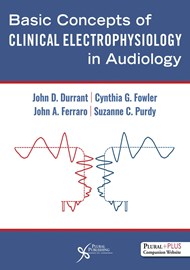Signal averaging principles have been around since 1875, but their application in medicine to enhance biologic signals was first made in 1947 for improved detection of electroencephalographic signals. It took a few more years until the first electrophysiological studies were conducted in the area of audiology.
Together with the developments in digital processing of data, signal averaging has revolutionised our understanding of bio-electric systems in our body such as auditory pathways. Isn’t it fascinating that we have surface electricity in the body that we can record with a computer with the help of a few pieces of paraphernalia and tell what is going on in the auditory brain? It is like a lens through which our understanding is directed to one of the most complex systems in the universe i.e. the human brain.
Despite the considerable research and development of new techniques, there is a relative dearth of textbooks in this particular speciality of our profession. Some other areas of audiology, such as amplification, have received more attention by the authors. However, this book fills that gap to an extent.
The book is a graduate-level text that breaks down all aspects of human electrophysiology for audiologists. Apart from the team of four main authors and an editor-in-chief, the book is a work of art by a long list of illustrious authors from what I count as 14 different countries. The content therein, doesn’t lack any authority for sure.
The complete volume has 475 crisp pages that will quench the thirst of any audiologist who wants to understand the scientific principles behind human electrophysiology and attain a certain grasp of the subject matter. If you routinely perform electrophysiological testing and are unsure about any aspects - look no further. You no longer have to push buttons on the computer and read the wiggly line and some points on a curve. This book has impressive details on everything you need to know on this subject. Taking the journey through all of the 10 chapters in the book one by one is akin to travelling to places of great culture, which opens up horizons of our thinking. There is just an amazing amount of information packed up in words, diagrams and the illustrations here.
Authors have found a very creative way of indexing the chapters at the start of the book. Each chapter has a ‘heads up’ detail for it e.g. for the chapter on basic concepts, the heads up is: “Like in space, it takes time to travel along the auditory pathways - so what?”. My favourite one is: “Need that like a hole in the head? What about a nail? A case in point”. Try to guess what chapter it could be for, and you will see why I liked the idea of ‘heads up’.
Basic and indeed some advanced concepts are explained clearly and in a practical way. Pretty much all areas of auditory electrophysiological testing are covered. There is good information on concepts, techniques and process of measurement. Be it electrocochleography, brainstorm responses, middle or late responses, or cortical responses, it is all covered here. I also liked the chapter on difficult-to-test population that has some great tips and tricks. There are useful and practical diagrams and illustrations to explain the complicated concepts.
I think it is abundantly clear from the above that I liked this book very much. It hits the metaphorical nail on the electrophysiological head. It should be a great resource for all graduate-level audiology students and clinicians practising in this area. And, if the publishers are reading this review, perhaps they would ask the authors to condense it in a handbook of electrophysiology for practising audiologists. I am sure it will easily become an essential book to have for any audiology practice that provides electrophysiological testing.




